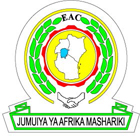
In order to promote public education and public safety, equal justice for all, a better informed citizenry, the rule of law, world trade and world peace, this legal document is hereby made available on a noncommercial basis, as it is the right of all humans to know and speak the laws that govern them.

EAS 154: 2000
ICS 59.080
EAST AFRICAN COMMUNITY
© EAC 2000
First Edition 2000
iiiDevelopment of the East African Standards has been necessitated by the need for harmonizing requirements governing quality of products and services in the East African Community. It is envisaged that through harmonized standardization, trade barriers that are encountered when goods and services are exchanged within the Community will be removed.
In order to achieve this objective, the Community established an East African Standards Committee mandated to develop and issue East African Standards.
The Committee is composed of representatives of the National Standards Bodies in Partner States, together with the representatives from the private sectors and consumer organizations. Draft East African Standards are circulated to stakeholders through the National Standards Bodies in the Partner States. The comments received are discussed and incorporated before finalization of standards, in accordance with the procedures of the Community.
East African Standards are subject to review, to keep pace with technological advances. Users of the East African Standards are therefore expected to ensure that they always have the latest versions of the standards they are implementing.
© East African Community 2000 – All rights reserved*
East African Community
P.O. Box 1096
Arusha
Tanzania
Tel: 255 27 2504253/8
Fax: 255 27 2504255
E-mail: eac@eachq.org
Web: www.eachq.org
* © 2000 EAC — All rights of exploitation of any form and by any means reserved worldwide for EAC Partner States’ NSBs
ivBaby napkins — Specification
This East African Standard prescribes the requirements for baby napkins.
The following referenced documents are indispensable for the application of this document. For dated references, only the edition cited applies. For undated references, the latest edition of the referenced document (including any amendments) applies.
EAS 242, Method for determination of dimensional changes of fabrics by cold water immersion
EAS 248, Method for determination of threads per centimetre in woven fabric
EAS 258, Test methods for determination of dimensions of woven fabrics
EAS 1), Methods for determination of mass per unit length and mass per unit area of woven or knitted fabrics
EAS1) -, Methods for determination of breaking load and elongation (strip method of woven fabrics
EAS1) -, Requirements for cotton sewing thread
EAS1) -, Method for determination of scouring loss in grey and finished cotton textile materials
EAS1) - Methods for determination of absorbency textile materials
For the purposes of this standard, the following terms and definitions shall apply.
a pile fabric commonly made with cut or uncut loops on both sides of the fabric
1) EAS -, Under development
1the cut or uncut loops composing the use surface of a terry fabric.
Baby napkins shall be soft, clean and shall contain no foreign bodies, starch or filling materials. In addition, baby napkins shall comply with the requirements in Table 1.
| Designation parameter | Light | Heavy | Method of test | |
|---|---|---|---|---|
| Mass in g/m2, min | 275 | 310 | Relevant EAS | |
| Breaking load in Newtons, in all directions, min | 350 | 350 | Relevant EAS | |
| Threads per cm, min | Warp | 18 | 20 | EAS 248 |
| Weft | 15 | 16 | EAS 248 | |
The baby napkins shall be made of 100 % cotton fibres.
The yarns used in the manufacture of baby napkins shall comply with the relevant East African standard on yarns.
The edges of the baby napkins shall be finished with selvedges and/or hems in the following manner:
The sewing shall be of even tension and the ends finished securely and neatly. The number of stitches shall be not less than 32 per 10 cm.
White cotton sewing thread complying with the requirements of the relevant East African Standard shall be used.
2The scouring loss of baby napkins shall not exceed 3.0 % when determined in accordance with the relevant East African Standard.
The baby napkins shall be fully bleached.
The dimensional change of baby napkins shall not exceed 5 % in both directions when tested in accordance with EAS 242 Method for determination of dimensional changes of fabrics by cold water immersion.
The duration for complete saturation of baby napkin specimens shall not exceed 4 s when tested in accordance with the relevant East African Standard.
There shall be three minimum sizes of baby napkins as follows:
| a) | Large | 60 cm × 60 cm. | |
| b) | Medium | 55 cm × 55 cm. | |
| c) | Small | 50 cm × 50 cm. |
The length and width of baby napkins shall be tested in accordance with EAS 258 Test methods for determination of dimensions of woven fabrics.
The baby napkins shall be free from defects given in Annex A when visually examined.
Each baby napkin shall be marked with the following information on a permanent and durable label:
Each package of baby napkins shall be marked with the following information:
(normative)
Missing warp or weft threads of over 50 mm in length
Loose sewing threads
Less than 32 stitches per 10 cm in the length of the hem
Defects in weave of fabric
Open seam at hem
Oil or dirt stains
Pulled terry
Temple holes
5 6